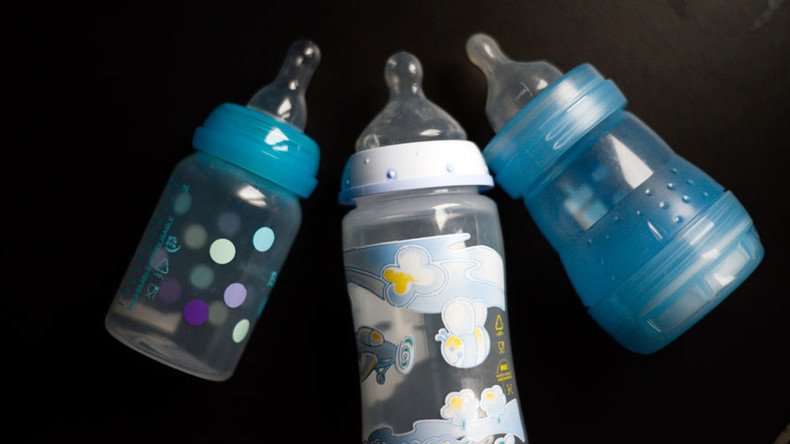S Korean ‘birth map’ sparks outrage, site pulled after just 1 day

South Korea’s government has been accused of treating women like domestic farm animals after launching a website with maps detailing the number of women of childbearing age in certain areas around the country.
Launched by the South Korean Ministry of the Interior on Thursday, the website Birth Korea was live for just one day before it was pulled.
지자체 #저출산 극복 프로젝트, #대한민국#출산지도! 내가 사는 지역의 #출산 관련 통계를 한눈에 만나고, 출산 #지원 혜택도 절대 놓치지마세요! 💑
— 행정자치부 (@withmoi) December 29, 2016
👶 기사로 보기 : https://t.co/oCLUTEjUkvpic.twitter.com/lT5NPtaCKg
홈페이지 직접 들어가서 보니까 더하네요 지역 누르면 순위까지 친절하게 뜨고요 위기감 느끼라는 겁니까? 가임기 여성 수 1위 지역 뭐 이런거요?다른 항목도 마찬가지 입니다 그래프로도 이미 충분히 잘 보이는 데 순위까지 넣은 의도 뭐죠? @withmoipic.twitter.com/OfWQJKIop8
— 무넝이 속 햄져 (@HEMzzeoguri) December 29, 2016
An article shared by the ministry on launch day explained that the project allowed people to view pregnancy graphs “at a glance”, as well as providing statistics on couples tying the knot and “childbirth in the last 10 years.”
대한민국 출산지도는 국민에게 지역별 출산통계를 알리고 출산관련 지원혜택이 무엇인지 알리기 위해 제작한 것으로 공식적인 주요 통계와 용어를 활용해 제작한 사이트 입니다. 현재 해당 홈페이지는 수정 작업 중... https://t.co/uIKf4KmWfG
— 행정자치부 (@withmoi) December 29, 2016
“In the future, we plan to carry out a project to raise maternity guidance… and analyze the effect of low-birth rate on local governments,” it said.
The areas with the highest proportion of women age between 15 and 49 were mapped in dark pink, report AP, while areas with fewer women in this demographic were colored light pink.
Negative reaction to the initiative was widespread, with some questioning why the site appeared to only focus on women, while others accused authorities of likening women to cows or vessels for childbirth.
@withmoi 가임기 여성이라니?? 여성이 가축이에요? 가임기 여성 수를 표시해서 뭐 어쩌라고요? 임신시키라고요? 출산지도라면서 왜 여성뿐이에요? 저출산대책이라면서 임신에 가장 적합한 정자를 가진 남성 수는 왜 없어요? 왜 출산의 책임을 여성에게만
— 군랑 (@ineffabilis374) December 29, 2016
Lee Min-Kyung, a South Korean author, is quoted by AP as saying: “I felt so angered that it blatantly showed how the government saw women’s bodies as the country’s reproductive tools, not that belonging to a woman.”
The inclusion of 15-year-old girls in the statistics also caused concern, with one commenter on the page calling it “disgusting.”
Another person asked why there were no pictures of men on the website and accused the government of focusing on economic issues rather than the human side of childbirth.
“I think they are thinking of [females] as wombs… Close the site,” they said.
여성을 전혀 개인으로 여기지 않고 자궁으로 생각하고 있다는 것 잘 알겠구요 개인의 성적지향 인생플랜 경제상황 아무것도 안중에도 없다는 것도 잘 알겠습니다. 당장 사이트 폐쇄하시죠. 이 무슨 히틀러야 뭐야.... @withmoi
— 금밀 (@js09426) December 29, 2016
In response to the project, a map showing men with “healthy sperm” was mooted by one commenter to Ministry of Home Affairs Twitter page.
@withmoi 건강한 정자를 가진 남자 통계지도도 만들어주세요~
— 냥코덕 (@inininininining) December 29, 2016
According to Hankyoreh, a South Korean daily newspaper, the Ministry of Government and Home Affairs will revise the website.
“The Republic of Korea birth map is produced to announce the regional birth statistics to the public and to inform the public about the benefits of childbirth support,” a government statement read.
“We are currently in the process of modifying the homepage and will resume service once the modification is complete.”
A message on Birth Korea states the homepage is under construction.
South Korea’s flagging birth rate has become such a concern that there have been suggestions the population could even face extinction.
In 2014, South Korea’s National Assembly Research Service forecast possible extinction by the year 2750, if the low pregnancy trend were to continue.












